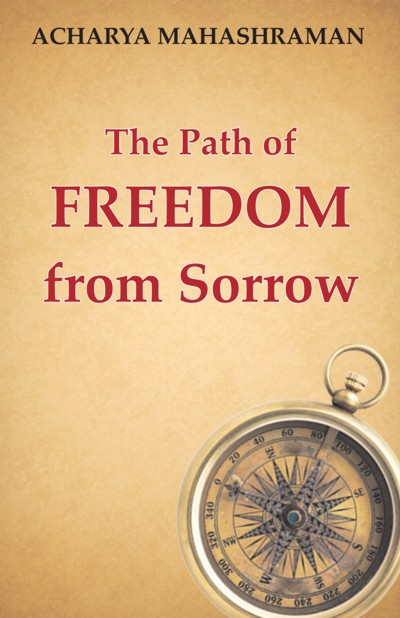In a rainy season, a huge ship was moving in the ocean. Suddenly, a terrible storm in the sea began. It was a dreadful situation. Due to stormy waves the ship began to totter. In a corner of the ship, a few people were discussing the philosophy of tattva (concept of real entities). Because of the storm, they became distracted.
Everybody was disturbed in this struggle of life and death. Only one traveller was absorbed in deep meditation. There was no sign of nervousness on his face. The storm ended after some time and the ship started moving at the same pace. The passengers in the ship asked the quiet man, "Do you not fear the storm?" He replied, "Previously many storms used to arise in my mind. Now I enter into a huge island existing inside me whenever there is a storm. Even the strong waves cannot enter the island and distract me. I call that island 'religion.'"
Sharman Keshikumar asked Indrabhuti Gautam:
Mahaudagavegenam, bujjhamanana paninam Sarnam gai paittha ya, divam kam mannasi muni.
It means, what is the refuge, path, haven and Island for the living beings swayed by the waves of water? Ganadhar Gautam replied,
Jaramaranveganam,bujjhamanan panino Dhatnmo divo paittha ya, gai saranmuttamam.
i.e. Religion is an island, shelter, path and refuge for the living beings who are swayed in the strong waves of life and death.
Why should a man practice religion? The goal of a religious or spiritual person is to attain moksha. Though there may be several sub-goals, the ultimate is to attain supreme peace, happiness and samadhi. The selection of a path is essential to achieve the goal. Acharya Umaswati has exquisitely explained the path of salvation as 'samyagdarshan gyan charitrani mokshamargah.' This means right faith, right knowledge and right conduct altogether constitute the path of salvation. Though, every action of a man with mithya drishti (perverted faith) also leads towards salvation, yet the action of a man with samyagdrishti is much more effective than that of one with mithya drishti. Pragyapurush Jayacharya highlighted this fact as:
Je samkit vin mhe charitra ni kiriya re
Bar anant kari, pin kaj na sariya re
Hiv samkit charit donun guna payo re
Vedan sampanai, sahayan labh savayo re
i.e. In the absence of right faith (samyagdrishti) I have practiced the religious conducts (charitra) infinite times. It was fruitless. Now I have attained both right faith and right conduct together. Therefore, if I endure the pain with equanimity I will receive greater benefit.
In the absence of the right faith, moksha was never possible, in spite of practising the right conduct many times.
A religious conduct can be practiced by a abhavya soul (who is not capable to attain moksha) also. He might be even become a leader of the religious group. The monks he initiates can attain salvation. But he never attains salvation in any of his lives. Though the similar conduct is followed by both a samyag drishti and mithya drishti, the same activity brings opposite effect.
Three things work in the life- aim, action and effect. In spite of performing the same action, difference of aim cannot bring the same effect. Effect always follows its aim. As the perspective or the aim is, so the outcome will be. Aim plays very important role in the field of spirituality. In the absence of right aim and right perspective, only a change of clothes cannot bring much benefit.
There was a hungry man. He would survive through begging. One day somehow he arrived in the monastery. He started begging. One monk suggested, 'If you become a monk, then you can have enough food to satisfy your hunger. The only aim of the beggar was to get food. He became a monk. After his initiation the other monk fed him well and let him sleep. In the morning he woke up in a pleasant mood, because after many days he slept soundly and his hunger was also satisfied. He went to his guru and said,
Khavan tnilagi khichidi, odhan tnilagi sod Chelo puche guruji ne, moksha aa hi hai ya aur.
He got khichadi to eat and bed to sleep. So he asked to his Guru, 'Is this the moksha or anything else?'
In the following verse it is said that since he did not get enough food at his home, he remained hungry. And so every day he had to beg. But after becoming a monk he would live a comfortable life.
Ghar mahin milato nahi, khawan puro ana) Bhek liyo bhagawan to, karwa lagya raj.
When satisfying hunger is only in focus then the spiritual practise becomes ignored. The main purpose of eating should be to keep the body fit, because the body is the primary tool for practicing spirituality- sharirmadyam khalu dharm sadhnam.'
The positive perspective and right effort can lead to one's destination. The possibility of achieving success becomes high.
 Acharya Mahashraman
Acharya Mahashraman
